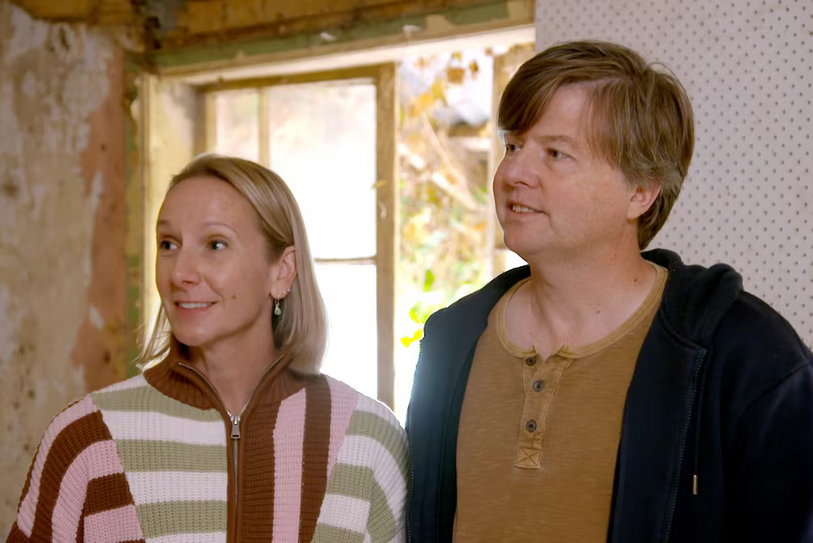 Kirsty and Mark purchased a 170-year-old colonial cottage, known as Longview, near Adelaide, Australia that was slowly being reclaimed by thickets of blackberries.
Kirsty and Mark purchased a 170-year-old colonial cottage, known as Longview, near Adelaide, Australia that was slowly being reclaimed by thickets of blackberries.
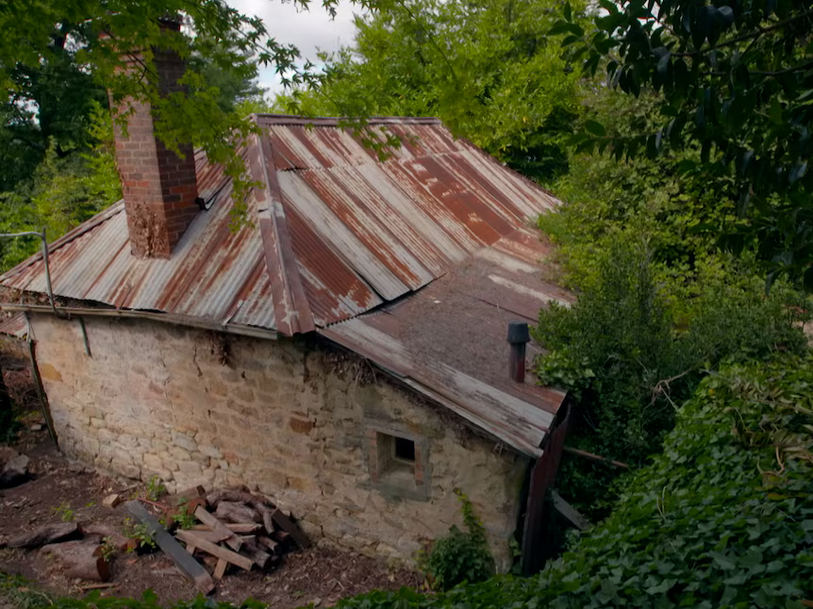 Their plan was to restore the cottage to save the history of the building, and also give their family of five a little more room. Their aim was to do an authentic restoration, using as many techniques and materials specific to its vintage as possible. “There’ll be no modern paints or modern cement renders, it’ll be all lime — lime renders and lime paints,” Mark said.
Their plan was to restore the cottage to save the history of the building, and also give their family of five a little more room. Their aim was to do an authentic restoration, using as many techniques and materials specific to its vintage as possible. “There’ll be no modern paints or modern cement renders, it’ll be all lime — lime renders and lime paints,” Mark said.
 The budget was $100,000 and they were hoping they could have it finished in a year. But before any restoration could begin, they had to free it from the stranglehold of nearby weeds. “I think the blackberries are literally holding it together,” Kirsty said. “As we peeled away all the layers of vegetation, it got more exciting in a way because you could see the way it was built.”
The budget was $100,000 and they were hoping they could have it finished in a year. But before any restoration could begin, they had to free it from the stranglehold of nearby weeds. “I think the blackberries are literally holding it together,” Kirsty said. “As we peeled away all the layers of vegetation, it got more exciting in a way because you could see the way it was built.”
Mark and Kirsty’s plan for the cottage included:
- Restoring the enclosed sleep-out area of the cottage to its original design as a verandah
- Lifting, straightening and resurfacing the internal and external walls
- Lifting and replacing the timber floors
- Turning the rear area into a modern kitchen and bathroom
- Keeping the stringybark shingles if possible and potentially installing a new tin roof to heritage standards
- Repairing and restoring as many original windows as possible
- Re-laying the stone wall at the front of the cottage
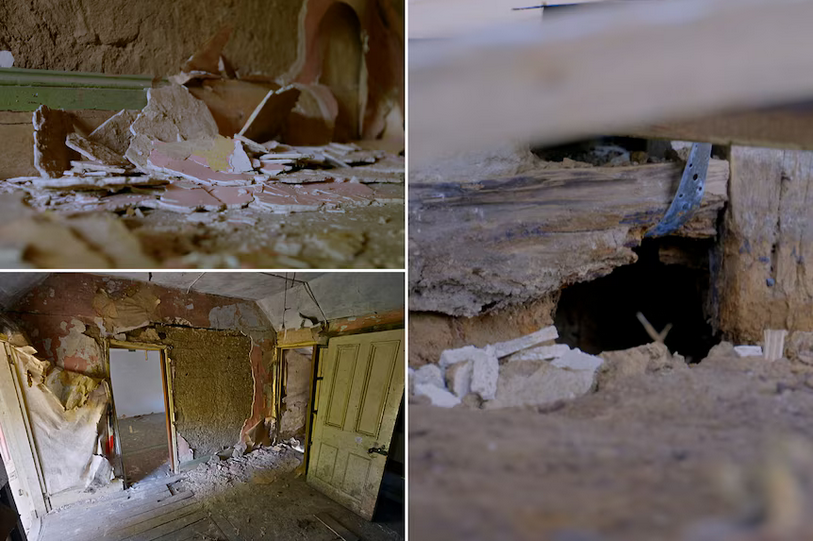 In an effort to save costs, they planned on doing the bulk of the work themselves. “No normal builder would want to take it on,” Kirsty said. “We had one guy come and say, ‘Oh I’d put a hose on it and let it wash down the hill’ and you sort of think, ‘Well you’re not for us’.
In an effort to save costs, they planned on doing the bulk of the work themselves. “No normal builder would want to take it on,” Kirsty said. “We had one guy come and say, ‘Oh I’d put a hose on it and let it wash down the hill’ and you sort of think, ‘Well you’re not for us’.
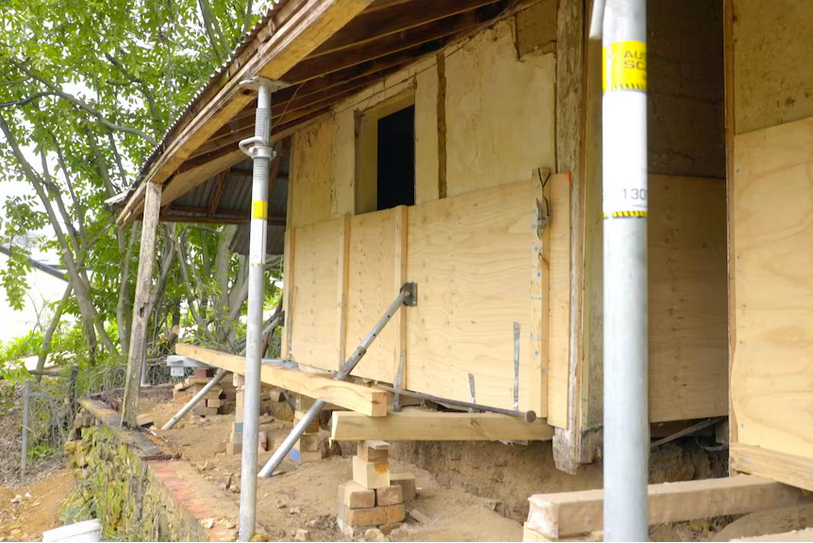 The walls needed to be pulled upright and most of its timber footings were decimated by rot or termites, and needed replacing. “They will be still reasonably wobbly and no straight lines but we will try and square it up a bit as we go,” Mark said. The walls were jacked up and secured with plywood braces to prevent them from falling, ready for new concrete foundations and locally sourced stringybark footings.
The walls needed to be pulled upright and most of its timber footings were decimated by rot or termites, and needed replacing. “They will be still reasonably wobbly and no straight lines but we will try and square it up a bit as we go,” Mark said. The walls were jacked up and secured with plywood braces to prevent them from falling, ready for new concrete foundations and locally sourced stringybark footings.
“We’ve got the whole building effectively off the ground,” Mark said. “We do have some props and things sort of holding it in position and the roof is holding it in position but there is a risk that the wall will start to move one way or another and become out of plumb. Or move away from things or … the whole building could totally collapse like a deck of cards.”
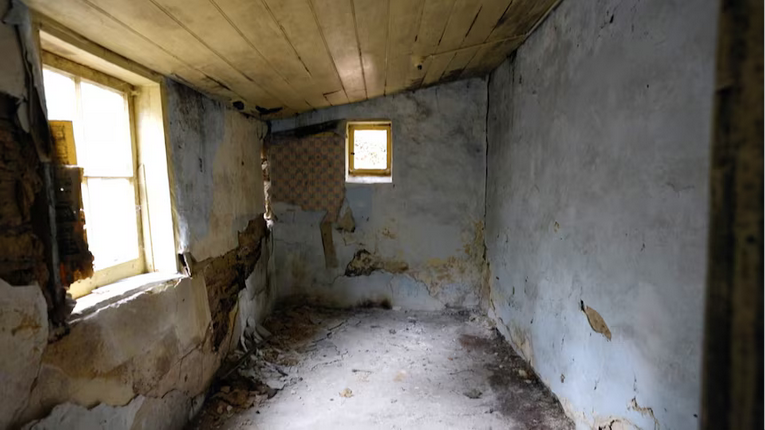 Just when everything seemed like it had gone well lowering the house off the jacks, there was a cracking noise. The only original piece of timber at the base of one of the walls was crushed. The wall it was holding up stayed intact but now sat much lower than anticipated. Reluctantly they left the wall where it was and resolved to fill below it with concrete to keep it in place.
Just when everything seemed like it had gone well lowering the house off the jacks, there was a cracking noise. The only original piece of timber at the base of one of the walls was crushed. The wall it was holding up stayed intact but now sat much lower than anticipated. Reluctantly they left the wall where it was and resolved to fill below it with concrete to keep it in place.
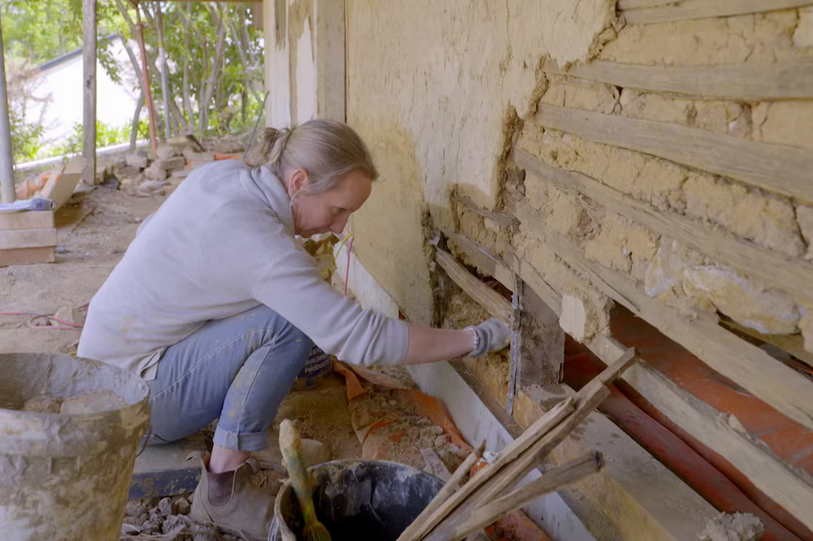 Kirsty and Mark used a mixture of mud, salvaged from the original walls, extra clay from around the cottage, water, stones, straw and horse hair replacement to fill any gaps. “It’s kind of nice to be reusing everything that we’ve lost from the building as we’ve tried to restore it.”
Kirsty and Mark used a mixture of mud, salvaged from the original walls, extra clay from around the cottage, water, stones, straw and horse hair replacement to fill any gaps. “It’s kind of nice to be reusing everything that we’ve lost from the building as we’ve tried to restore it.”
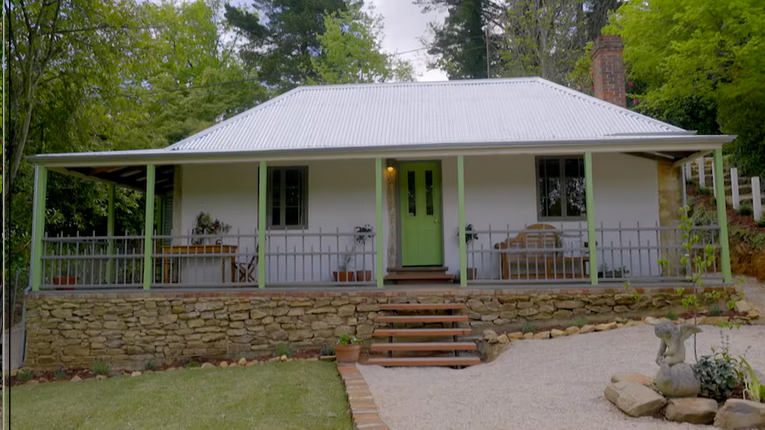 Internal plastering and outside rendering were two of the few jobs that Kirsty and Mark outsourced. The other job they outsourced — to Kirsty’s dad Brian — was repairing and restoring the original windows.
Internal plastering and outside rendering were two of the few jobs that Kirsty and Mark outsourced. The other job they outsourced — to Kirsty’s dad Brian — was repairing and restoring the original windows.
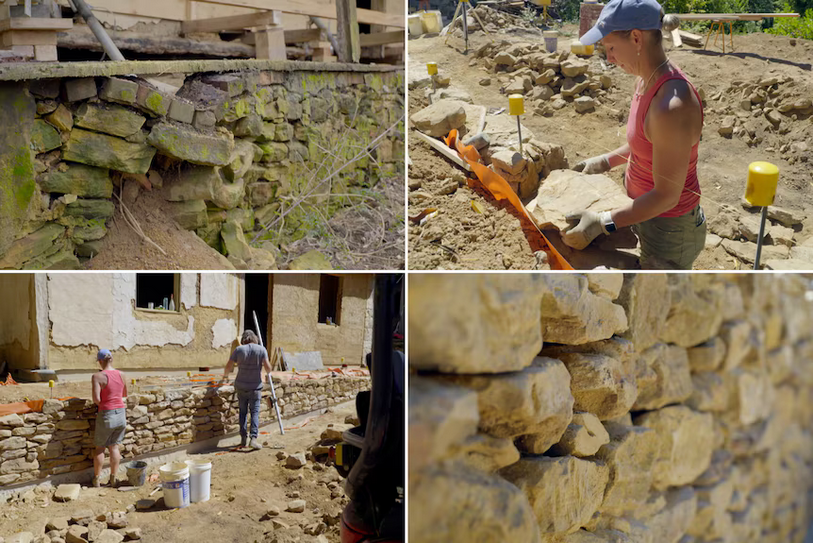 In Kirsty’s words, the least-fun job was re-laying the stone wall out the front of the cottage. “It’s a bit of a nightmare,” she said. “It’s like a massive jigsaw puzzle and it’s so much harder than I thought it would be. But hopefully it will stay standing for the rest of our lives.”
In Kirsty’s words, the least-fun job was re-laying the stone wall out the front of the cottage. “It’s a bit of a nightmare,” she said. “It’s like a massive jigsaw puzzle and it’s so much harder than I thought it would be. But hopefully it will stay standing for the rest of our lives.”
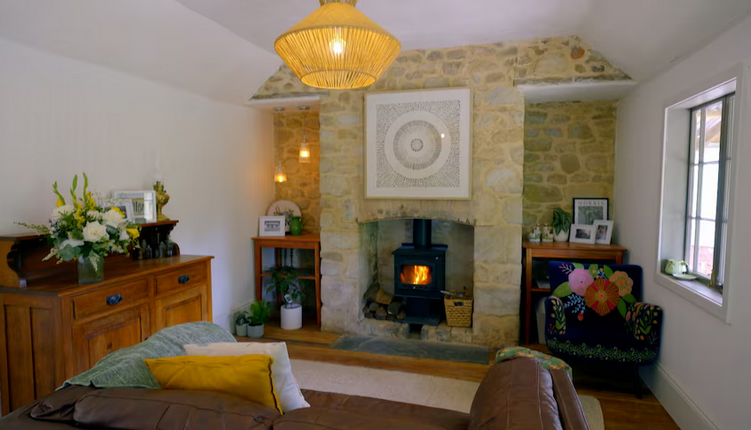 After sacrificing thousands of hours of weekend and after-work time, the little cottage’s restoration finally came to a close two years later.
After sacrificing thousands of hours of weekend and after-work time, the little cottage’s restoration finally came to a close two years later.
Mark and Kirsty said they ended up spending around $50,000 to $60,000 more than their original $100,000 budget and it took them roughly six months longer than they’d hoped.
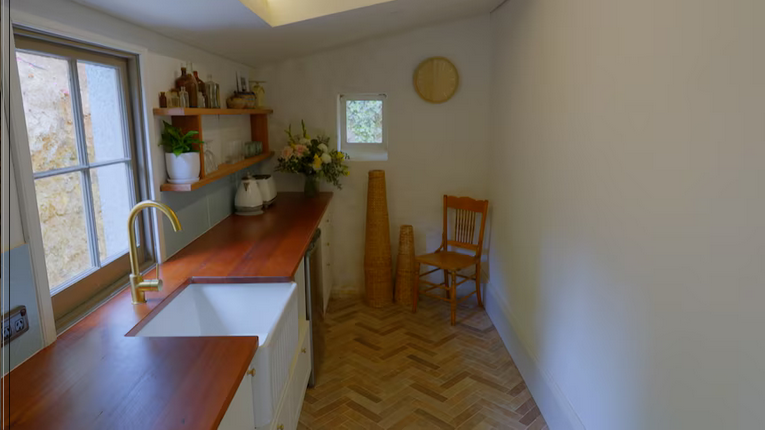 “There’s no handbook on how to restore a building like this because it’s not done anymore, so we had to learn ourselves and teach ourselves … and we feel like we’ve … put it back to how it was built,” Kirsty said. “There’s definitely been moments where we wanted to kill each other that’s for sure, but that’s normal right?” she added, laughing.
“There’s no handbook on how to restore a building like this because it’s not done anymore, so we had to learn ourselves and teach ourselves … and we feel like we’ve … put it back to how it was built,” Kirsty said. “There’s definitely been moments where we wanted to kill each other that’s for sure, but that’s normal right?” she added, laughing.
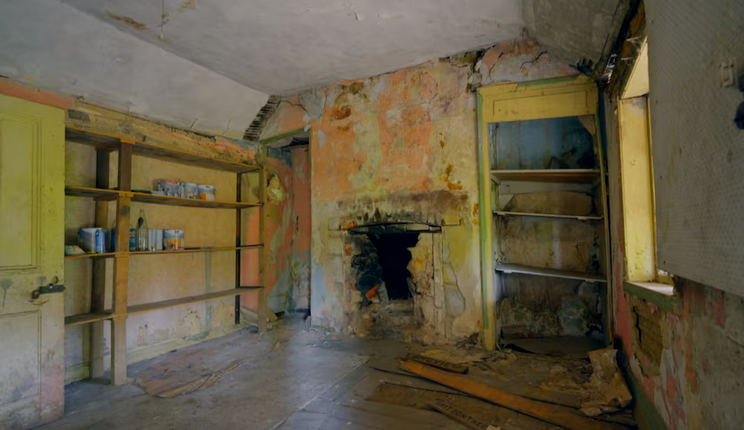 The two main rooms were restored to their previous cozy state, complete with lime render over the rammed earth walls.
The two main rooms were restored to their previous cozy state, complete with lime render over the rammed earth walls.
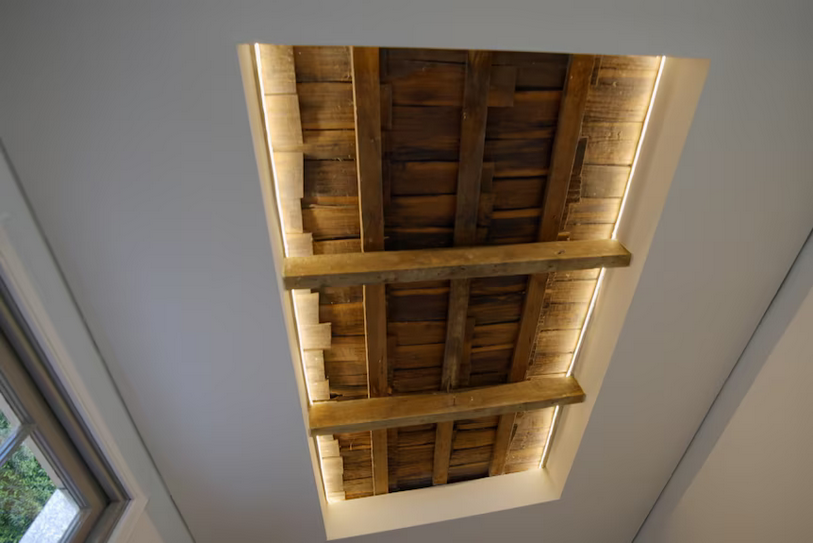 At the back of the cottage, an original section of the stringybark shingled roof is on full display above the newly installed kitchen. And Mark said between 50 to 60 per cent of the original floorboards were saved and interwoven with locally milled stringybark. But, for the heritage-conscious pair, the modern additions to the cottage have their place too.
At the back of the cottage, an original section of the stringybark shingled roof is on full display above the newly installed kitchen. And Mark said between 50 to 60 per cent of the original floorboards were saved and interwoven with locally milled stringybark. But, for the heritage-conscious pair, the modern additions to the cottage have their place too.
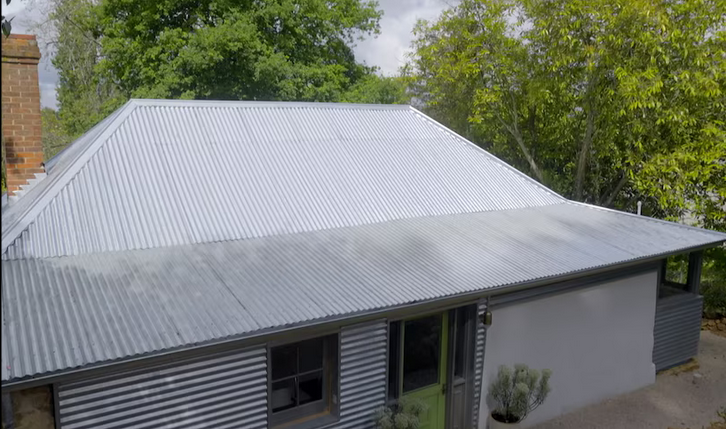 “The main thing I think with restoring old buildings is that if they’re not used, they fall down,” Kirsty said. “So we have to use buildings in a way that they function today and to keep people using them.”
“The main thing I think with restoring old buildings is that if they’re not used, they fall down,” Kirsty said. “So we have to use buildings in a way that they function today and to keep people using them.”
You can read the original article at www.abc.net.au

Charming